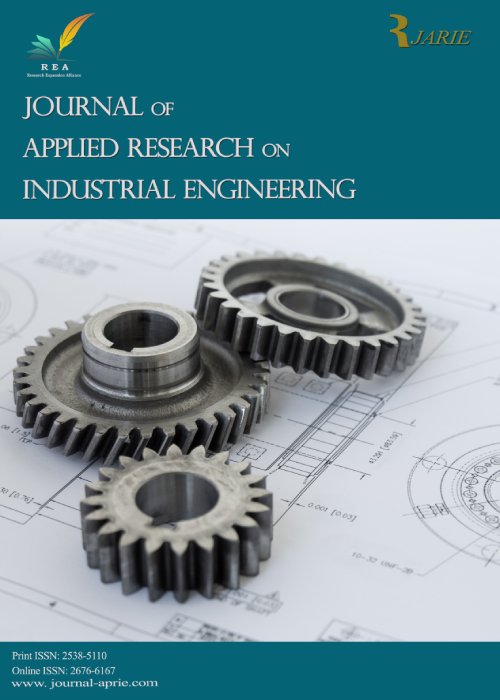فهرست مطالب
Journal of Applied Research on Industrial Engineering
Volume:1 Issue: 1, Winter 2014
- تاریخ انتشار: 1392/12/18
- تعداد عناوین: 5
-
Pages 1-11One of the applications of Data Envelopment Analysis (DEA) is in ranking of Decision Making Units (DMUs). When some DMUs are the same in efficiency score, this ranking results in failure. Various methods are introduced to rank efficient and inefficient DMUs and attempt to give a fully ranking in order to improve the evaluation. Many articles are published in this field so that have some problems. In this paper, by considering undesirable outputs and extending the inefficient space, a complete ranking of DMUs is presented. On the other hands using facet as a complement of previous methods leads to a fully ranking.Keywords: Ranking, Undesirable outputs, Facet Analysis, data envelopment analysis (DEA)
-
Pages 12-18As ranking is one of the most important issues in data envelopment analysis (DEA), many researchers have comprehensive studies on the subject and presented different approaches. In some papers, DEA and Analytic hierarchy process (AHP) are integrated to rank the alternatives. AHP utilizes pairwise comparisons between criteria and units, assessed subjectively by the decision maker, to rank the units. In this paper, a nonlinear programming (NLP) model is introduced to derive the true weights for pairwise comparison matrices in AHP. Genetic algorithm (GA) is used in order to solve this model. We use MATLAB software to solve proposed model for ranking the alternatives in AHP. A numerical example is applied to illustrate the proposed model.Keywords: data envelopment analysis (DEA), Analytic Hierarchy Process (AHP), Genetic Algorithm (GA)
-
Pages 19-27Energy is essential parameter for economic social development and quality of life. Sustainable energy is requisite for any economic growth. Nowadays, new options for producing energyand using technologies for its production are reproducible. So, the choice of technology is very important. In this article, 6 different renewable powers has evaluated using Hybrid model of Artificial-Neural Network (ANN) and data envelopment analysis base on economic- technical indicators. Because, the low number of inputs and outputs of decision making units, (DMUs), leading to a reduction a separable power of DMUs at traditional DEA, so the NEURO-DEA was used the simulation results shows that off-shore wind energy have high efficiency rather than other studied energy.Keywords: Data Envelopment Analysis (DEA), Artificial-Neural Network (ANN)
-
Pages 28-34Selecting the best performer departments can be a difficult task when there are many applicants for comparison. Data envelopment analysis (DEA) representative a non parametric tool can be used as a fair technique to support the decision making process .Considering the fact that competition and dependency always exist between two real DMUs, a DMU must only be compared with real DMUs lying at different efficiency levels. This paper applied a context-dependent DEA to determine the best candidate relative to the others, evaluate the degree of excellence of best candidate's performance and then clusters them.Keywords: Data envelopment analysis, Context dependent DEA, Educational Department
-
Pages 35-49Competition among the industrial and service organizations to provide their clients with financial and credit requirements through the banking facilities has considerably increased. On the other hand, the challenge facing these financial and credit resources is that they are limited. Therefore, the optimal allocation of these limited financial resources with the aim of maximizing the investment value is of a great priority for banks and other financial institutes. In this study, first the credit criteria for the applicants for bank facilities have been identified and then based on the improved Data Envelopment Analysis (DEA) technique, an effective method has been proposed for the client clustering. The improved DEA method which is called Golden DEA reduces the calculation time and increases the decision-making operations that ultimately lead to the improvement of the existing method. Also, the improved DEA model provides a short, dynamic and straight path in order to achieve greater efficiency for every institution. The priority provided by the improved DEA method has been compatible with the priority given by the existing DEA method for all of the understudied cases.Keywords: Data envelopment analysis, Financial Resource Allocation, efficiency, Decision Support system, banking


